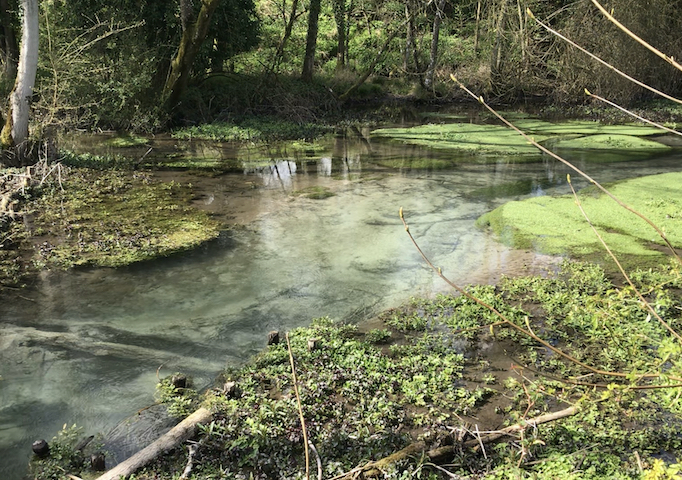As I continue my exploration of regenerative design in engineering, correspondents have said it would be helpful to gather examples of regenerative design. Templates that we can look at, imitate and integrate.
From my reading of Wahl (see my recent post), I’m increasingly understanding regenerative design to be a process rather than a thing.
Regenerative practice of any sort (in design, in education, in living…) is practice that leaves the ecosystem richer and better able to heal itself. It is practice that sees humans as a keystone species that play a unique role in helping their ecosystems thrive.
Disconnection from our biosphere
Since industrialisation, our society has been on a journey of separation from the biosphere that supports us and that we once played a role in sustaining. Separated, we extract more from it than we can sustain, without feeling or seeing any of the damage we are doing. Consumerism and the pursuit of growth at all costs creates a culture of competition and fear – of scarcity.
And yet a rich biosphere could generate all the abundance we need to live well: from food, materials and energy to well-being and a culturally rich life. But we have to heal our biosphere to benefit from its richness. Regenerative practice is action that is helping to heal our biosphere.
Behaviour shift
If our behaviour as a species is destroying our biosphere, then changing our behaviour is critical to bringing about that healing.
The ecosystem can’t support everything that competition and fear might cause us to want. But our ecosystem can provide everything we need to live well if we shift focus to a more collaborative, rather than competitive, way of living; if we can focus instead on the abundance that surrounds us rather than on the fear of not having enough. This is the behavioural shift that we need.
Reconnecting with nature is fundamental
Reconnecting with nature is fundamental to this behavioural shift. The process operates at many levels:
1 – Understanding how the ecosystem works
When we reconnect with nature, we gain a greater understanding of how it works. What are the natural processes cycles that exist with such force in nature, which have existed for aeons? How do we work with and do we work in spite of these processes? How does nature develop resilience and redundancy? How do our ecosystems repair themselves?
2 – It reveals the abundance that our ecosystems can produce
When we pay closer attention to natural systems we can appreciate what it supplies in abundance. From light in summer to darkness in winter. The profusion of natural building materials that regenerate every year. Food that can grow in bountiful quantities in our climate with no need for external fertiliser. Clean air that is filtered by the breathing of plants and trees. The continuous use of cycles of death and decay to create nutrients for new creation. The endless patterns and colours that can fill our eyes and ears with beauty.
In this abundance we can afford to live in great wealth. It is when we seek to consume what there is not in abundance that we revert to extraction, at the cost of the ecosystems that support us.
3- A reminder of our fundamental needs
A period of time in nature can serve as a reminder of how much we can benefit from a deeper connection with our ecosystems. These are the ecosystems that we evolved in for hundreds of thousands of years, from which we only separated ourselves relatively recently in our evolution. Time spent away from our modern-day trappings is a reminder of what we really need. These aren’t the anxiety-driving needs of, say, a nebulous online existence, but more fundamental and tangible needs.
And it helps us discover or rediscover how good immersion in nature can feel: from the fresh air, to the exposure to natural cycles of light; from the enjoyment of filling our field of vision with natural forms to the benefits to our microbiome of getting dirt under our fingernails. Research backs this up: contact with nature if very good for us.
4 – A space for healing
Natural prescriptions, by which doctors prescribe a course of contact with nature, are becoming increasingly popular in the UK. Contact with nature isn’t just good for us, it can help us recover from a wide range of mental and physical illnesses.
But beyond the treatment of more obvious conditions, from an evolutionary perspective, our removal from our ecosystem is still a recent and sudden occurrence, of which we are only now starting to see the harm. Reconnecting with nature feels fundamental to coming to terms with that loss and to start to heal that trauma at a population level.
Transformational change
To enable our ecosystems to heal and for us to heal with them, requires a shift in our behaviour away from a competition and scarcity-mindset to a collaboration and abundance mind-set. From a condition in which we are separated from our ecosystem to one in which we exist more fully as part of it. The level of change needed is a transformational change in our culture and our narratives about ourselves.
Transformational change is not achieved in theory but through lived practice that develops through experimentation and reflection.
To do something in a regenerative way is to experiment, through practice and reflection: practising collaboration and unlocking abundance in the pursuit of healing our ecosystems.
Regenerative design is a lived process not a thing. And so I see it as misleading to say such and such is an example of a regenerative building. Better I think to look for examples where the output has been reached through regenerative practice. Likewise, we would benefit identifying examples where projects have enabled wider regenerative practice. Gathering such examples would indeed be helpful for the wider understanding of regenerative design, and I will aim to do so as part of my work. All contributions welcome!



Leave a Reply